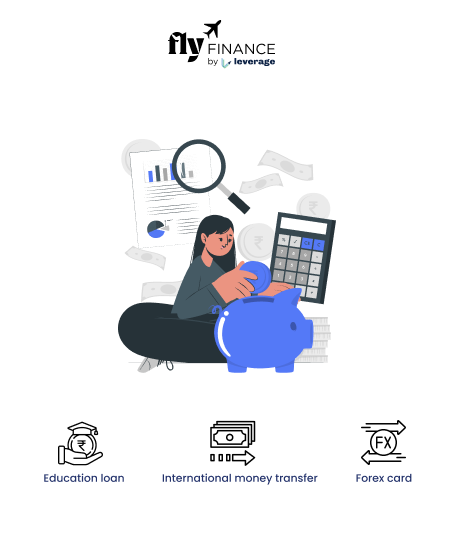What is CKYC in Bank? Opening a bank account or applying for a loan, credit card, or mutual fund often involves a lot of paperwork. Among the most common steps is completing the KYC (Know Your Customer) process. But did you know there’s a centralised version of this process called CKYC that can simplify your life?
CKYC, or Central Know Your Customer, is a government initiative to make KYC compliance easier and seamless across financial institutions. Let’s break down what is CKYC in bank, how it works, and how it can make your banking experience more convenient.
This Blog Includes:
CKYC Full Form and Meaning
Before diving into the details, let’s start with the basics: the full form of CKYC is Central Know Your Customer. It is a centralised repository that stores your KYC information and makes it accessible to all financial institutions regulated by the RBI, SEBI, IRDAI, and PFRDA.
This means once you complete your CKYC with one financial institution, you don’t need to repeat the process again and again with others. Your verified KYC details are linked to a 14-digit CKYC number, your universal KYC reference.
Check out the major features of CKYC in the bank-
- The purpose of CKYC is to eliminate repeated KYC submissions and create a single identification across financial institutions.
- The Central Registry of Securitisation and Asset Reconstruction and Security Interest of India (CERSAI) manages CKYC.
- CKYC is mandatory for new investors in mutual funds and other regulated financial products.
- CKYC registration is free of cost.
Types of CKYC Accounts
Depending on the type of documents submitted, there are 4 types of CKYC accounts:
Normal CKYC Account
- Purpose: Standard account for customers who can submit valid government-issued identity and address proofs.
- Documents Required:
- Mandatory: PAN Card (for Indian residents) or Passport (for NRIs).
- Additional Documents: Aadhaar, Voter ID, Driving License, or other officially valid documents (OVDs).
- Features:
- Full access to financial services (banking, investments, insurance, etc.).
- No transaction limits (subject to institution policies).
- Used for high-value transactions and regular KYC compliance.
Simplified CKYC Account
- Purpose: For individuals who do not possess standard documents like PAN or Aadhaar but have alternative IDs.
- Documents Accepted:
- Non-standard IDs (e.g., employer-issued ID, student ID, gas connection bill).
- Must be verified by the regulated entity (bank/NBFC/SEBI-registered intermediary).
- Features:
- Limited to low-value transactions (e.g., deposits up to INR 50,000/year in banks).
- Requires upgradation to Normal KYC if the customer later submits standard documents.
Small CKYC Account
- Purpose: For customers who cannot provide full KYC documents immediately.
- Documents Required:
- Only photograph and signature (self-attested).
- No address or identity proof is mandatory at the time of opening.
- Features:
- Highly restricted services:
- Maximum balance limit (e.g., INR 50,000 in banks).
- Annual deposit limit (e.g., INR 1 lakh).
- Cannot receive foreign remittances.
- Validity: 12 months (must convert to Normal/Simplified KYC afterward).
- Highly restricted services:
OTP-Based eKYC Account
- Purpose: Instant digital account opening using Aadhaar-based authentication.
- Process:
- The customer’s Aadhaar number is verified via OTP sent to the registered mobile.
- Biometric authentication (fingerprint/iris) may also be used.
- Features:
- Temporary initially: Must be converted to full CKYC within 6 months (per RBI guidelines).
- Transaction Limits:
– Banks: INR 1 lakh/year (e.g., for wallets like Paytm).
– Mutual Funds/Stock Brokers: INR 50,000/year (unless upgraded). - Paperless: No physical documents required.
Also Read: What is Proof of Payment? Meaning, Examples, Importance
Documents Required for CKYC in Bank
To comply with Central Know Your Customer (CKYC) norms, individuals must submit valid identity and address proofs along with a completed CKYC form. These documents help financial institutions verify customer details and prevent fraud.
Below is a detailed list of acceptable documents:
- Identity proof (PAN, Aadhaar, Passport, Voter ID)
- Address proof (Aadhaar, utility bills, bank statement)
- Passport-size photograph
- CKYC form (duly filled and signed)
How to Complete the CKYC Process?
Completing your CKYC is a simple process that can be done offline or online (if available). Here’s a step-by-step guide:
- Visit a bank or financial institution.
- Fill out the CKYC form.
- Submit identity and address proof along with a passport-size photo.
- The institution will verify your documents and send them to CERSAI.
- Once processed, you will be assigned a 14-digit CKYC number.
How to Check CKYC Status Online?
The Central KYC (CKYC) registry, maintained by CERSAI (Central Registry of Securitization Asset Reconstruction and Security Interest of India), allows individuals to check their KYC status online using their PAN. This helps verify whether your KYC details are updated across financial institutions (banks, mutual funds, brokers, etc.).
Below are the steps to check your CKYC status:
1. Visit the CKYC Portal
- Go to the official KRA (KYC Registration Agency) portal:
- CVL KRA
- Alternatively, visit CERSAI’s website (if supported).
2. Enter PAN Details
- Input your 10-digit PAN number (must match the one used in CKYC registration).
3. Complete Captcha Verification
- Enter the case-sensitive captcha to confirm you’re not a robot.
4. Submit & View CKYC Status
- Click “Submit” to fetch your CKYC details.
- If your KYC is registered, you’ll see:
- CKYC Identifier (14-digit KIN)
- Name, Address, and KYC Status (Verified/Pending)
- Date of Last Update
What If CKYC Details Are Not Found?
- Reason 1: Your KYC may not be linked to CERSAI (check with your bank/broker).
- Reason 2: Incorrect PAN entered.
- Solution: Re-submit KYC via a SEBI-regulated entity (bank, mutual fund, etc.).
Alternative Methods to Check CKYC Status
- Via Email: Contact your financial institution (bank, mutual fund, etc.) with your PAN.
- Offline Verification: Visit a bank branch with your PAN & ID proof.
Important Notes
- CKYC is PAN-based: Ensure all financial entities use the same PAN for uniformity.
- Updates Take 3–5 Days: Recent submissions may not reflect immediately.
- Errors? Contact CERSAI at [email protected] or call 1800-103-3474.
Also Read: How to Pay Canara Bank Education Loan Online? Guide to Repayment
Difference Between KYC, eKYC, and CKYC
KYC (Know Your Customer) is a mandatory process for verifying a customer’s identity before providing financial services. While KYC, eKYC, and CKYC serve the same purpose, they differ in process, verification method, and reusability.
Understanding these differences helps in choosing the right KYC method for banking, investments, and other financial transactions.
| Feature | KYC (Traditional) | eKYC (Electronic KYC) | CKYC (Central KYC) |
| Format | Physical document submission | Digital (Aadhaar OTP/biometric) | Centralized (14-digit KYC Identifier – KIN) |
| Verification | Manual (Bank/broker checks) | Instant (UIDAI-authenticated) | CERSAI-verified (Central Registry) |
| Reusability | Valid only for the institution where submitted | Valid only for the institution where processed | Accepted across all SEBI/RBI/IRDAI-regulated entities |
| Data Storage | Stored by individual institutions | Stored in UIDAI’s Aadhaar database | Maintained in CERSAI’s centralized database |
| Documents Required | Physical ID & address proofs | Aadhaar + OTP/Biometric | PAN, Aadhaar, Passport, etc. (linked to CERSAI) |
| Processing Time | 1-3 days | Instant (real-time) | 24-48 hours (once submitted) |
| Best For | Older customers without Aadhaar | Fast onboarding (wallets, fintech apps) | Seamless KYC across banks, mutual funds, and insurers |
When to Use Which KYC?
- Traditional KYC – If you don’t have Aadhaar or prefer offline submission.
- eKYC – For instant account opening (Paytm, PhonePe, digital banks).
- CKYC – For long-term convenience (single KYC valid across all financial institutions).
To sum up, while KYC is the traditional method, eKYC speeds up digital onboarding, and CKYC eliminates repetitive verification across institutions. Choosing the right one depends on your needs, speed, convenience, or universal acceptance.
If you need help with KYC, you can check your status online or contact your bank/financial provider for updates.
Check out the FAQs below for more information.
FAQs
Yes, CKYC is generally considered better than eKYC because it creates a centralized and permanent KYC record across all financial institutions regulated by RBI, SEBI, IRDAI, and PFRDA. Once registered, your CKYC number can be used for banking, mutual funds, insurance, and other financial services—saving you from doing the KYC process repeatedly.
No, you do not need to do KYC again if you have a valid CKYC record. CKYC replaces traditional KYC by maintaining your verified details in a central database. Financial institutions can retrieve your KYC from CERSAI using your CKYC number or PAN, making the process faster and smoother.
Yes, eKYC is Aadhaar-based and requires OTP verification. Your Aadhaar number is authenticated through UIDAI using OTP sent to your registered mobile number. It’s a paperless and quick method but may not be accepted for all types of financial products or accounts due to regulatory limits on OTP-based verification.
Yes, you can use eKYC to invest in mutual funds, especially if it’s Aadhaar OTP-based. However, such accounts often come with restrictions—like an investment cap of INR 50,000 per financial year. To remove these limits and ensure wider acceptance, it’s better to upgrade to full CKYC.
CKYC is considered the most secure among KYC methods. It is maintained by CERSAI, a government-regulated body, and all your personal details are encrypted and stored securely. Unlike physical KYC where documents may be misplaced or duplicated, CKYC uses a centralized digital format with strict access controls.
Yes, you can upgrade from eKYC to CKYC by submitting the full set of physical KYC documents (like PAN, address proof, and photograph) to a financial institution. Once verified, your information will be uploaded to the CKYC registry, and you’ll receive a 14-digit CKYC number.
Yes, both SEBI (for capital markets) and RBI (for banking and NBFCs) have made CKYC mandatory for new customers. It helps regulators create a unified KYC process across different financial sectors and helps reduce fraud and duplication.
Yes, all RBI-regulated banks and financial institutions are required to comply with CKYC norms. Whether it’s a private bank, public sector bank, cooperative bank, or NBFC, they must collect your CKYC number and update your KYC through the centralized system. This ensures a uniform and simplified KYC process across the board.
To learn more about education loans, the best bank accounts for students, forex, and banking experience for global students or international money transfers, reach out to our experts at 1800572126 to help ease your experience with studying abroad.
| Additional Reads | |
| Full Form of CIBIL | Full Form of NBFC |
| CC Full Form | Full Form of POS |
| Full Form of NPA | Full Form of PAN |
| Full Form of CIF | Full Form of EMI |
| Full Form of NACH | Full Form of DPD |
Follow Us on Social Media





























